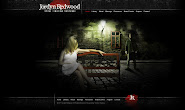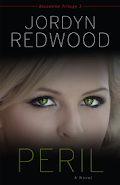 |
| Wikipedia |
The best resource for anyone for all things ingested is the Poison Control Center. They are our first line resource for discussing these cases. I knew I would call them but didn't really know what help they could offer. In my mind, they'd be limited to known pharmaceuticals or toxins. Something with a label on it.
I was clearly wrong.
Because the Poison Control Center I called actually had a "mushroom specialist" available by phone. Some who had worked in the field for twenty-five years.
Luckily, we had a specimen available to us. This is where my authorly skills came in-- in describing the mushroom.
What I found interesting was some of the questions she asked about the mushroom in order to help identify it and ultimately determine if it was poisonous or not.
1. Where was it found? In a "cultivated lawn" or a wooded area? From what I gather from her, poisonous mushrooms are less likely to grow on manicured lawns.
2. Did it grow near a tree? What type of tree? How close did it grow to the tree?
3. What color is the cap, stem and gills?
4. How big does the cap measure?
5. How long is it?
6. What is the width of the stem?
7. When the stem is bent-- does it bend or break?
8. Does it have gills? These are the page-like structures underneath the cap.
9. Does it have a ring? This is a structure that might cover the gills and you wouldn't know gills were present unless the ring was removed.
In this case, we were able to send photos of the mushroom to the specialist via a smart-phone. This is one way smart phones have really enhanced medical diagnosis.
Good news, in our case, the mushroom was edible. In fact, her favorite edible kind called a fairy-ring mushroom or marasmius oreades. She enjoyed them so much she wished they would start growing in her yard again.
The mushroom specialist encouraged the family to keep the specimen in wax paper (definitely not plastic) for an additional 24 hours in case the child developed any other symptoms. Not because of the mushroom itself but what could be on the mushroom. She said, often kids have ingested something around the mushroom (perhaps a pesticide) that is causing their symptoms but the "mushroom gets blamed."
I guess that's a perk of being a mushroom specialist, knowing what you can eat from your lawn without killing yourself.
So, know that poison control is a good option for ingestions of these sorts but, if at all possible, pick a couple of the specimens to take with you. And, if the child is okay, feel free to call poison control before proceeding to the ER.
Often times, they can save you a trip.

















Hi Jordyn, Got a question. My character has a severe allergy to...something. I want them to meet their end by ingesting this substance. If it's mushrooms, could they die if someone put a dried powdered form in flour and bake it in something like cookies? Would I need to specify a certain type of mushroom (i.e. Shitake)? Or in this case is the allergy pretty much across the board? Thanks!
ReplyDeleteGlad I saw you in person and answered this question but for all other-- I'll do an official post about it.
Delete